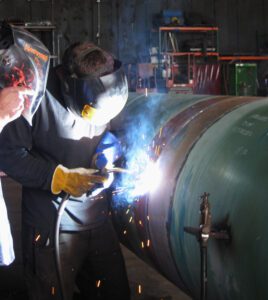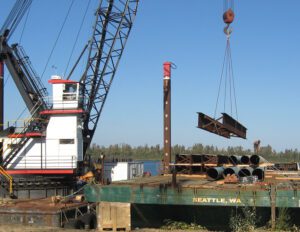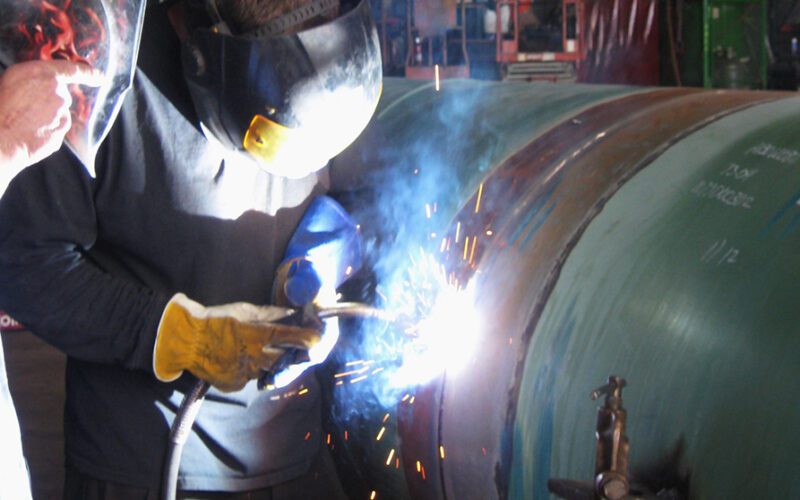
The Oregon Department of Transportation’s I-205 Improvements Project involves some challenging engineering on the Abernethy Bridge, across the Willamette River south of Portland.
This stretch of I-205 carries more than 100,000 vehicles daily and needs a major upgrade to become a “seismically resilient lifeline” in the event of a Cascadia Subduction Zone earthquake, according to the Oregon DOT.
Many local contractors are delivering large amounts of material and equipment by road to designated drop-off zones, but WCT Marine, at the Hyak Tongue Point shipyard in Astoria, is using the river itself to ship dozens of steel pilings to support temporary work platforms.
The route travels 90 miles up the Columbia River to Kelly Point, then another 24 miles up the Willamette to the site, which is close to historic locks that are no longer in service.
The pilings, up to 160-feet long, are all constructed from 80-foot long, three foot in diameter tubes that were sold off after the termination of the Keystone Pipeline extension. They are machine-beveled and assembled by WCT welders who are certified by Industrial Inspection Services of Vancouver.
When completed, they weigh up to 18 tons and are carried along the shore by high-capacity forklift trucks to the loading dock. From here, the yard’s 100-ton floating crane lifts them onto a 200-foot barge, where they are double stacked and carefully secured for the river journey, which required switching to a smaller shallow-draft boat for the last few miles.
“We appreciate the contribution that WCT has made to help start this project by efficiently assembling these pilings in Astoria and delivering them on schedule on a barge. This has enabled us to make solid progress on the temporary work platforms that will support bridge construction,” Della Mosier, a Department of Transportation’s deputy director, said.
The first phase of the I-205 Improvements Project is expected to cost $495 million and will take shape over the next four years.

“We are proud to have been selected to support ODOT’s I-205 Improvements Project,” Willie Toristoja, who founded WCT in 2014, said. “Although most of our work is marine, we have the space and the workforce here in Astoria to perform all types of construction and prefabrication, which can easily be delivered by barge to any site near the waterfront.”
The biggest structure WCT has built here is a 150-foot-by-30-foot floating dock launched via the yard’s 400-ton ramp and now in use at the Port of Kalama, Wash.
The barge has made four trips so far, with future departures dependent on the rate of progress at the bridge site. If placed end-to-end, the entire order of 80 pilings would stretch over two miles, Toristoja noted.
This river route was in national headlines 30 years ago when it was chosen to transport the giant Howard Hughes seaplane to McMinnville, Ore., where the Evergreen Aviation & Space Museum is celebrating the 75th anniversary of its only flight. Coincidentally, the Hyak Tongue Point property was used as a naval flying-boat station during World War II.

